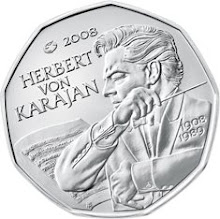
We have never seen a swing that can oscillate forever without stopping. The amplitude of oscillation for any oscillation system in air will become progressively smaller with time until it finally stops. The oscillating system is said to be undergoing damping. This is caused by damping force which oppose the motion.
Damping is any effect, either deliberately engendered or inherent to a system, that tends to reduce the amplitude of oscillations of an oscillatory system.
In physics or engineering, damping may be mathematically modelled as a force synchronous with the velocity of the object but opposite in direction to it. If such force is also proportional to the velocity, as for a simple mechanical viscous damper (dashpot), the force F may be related to the velocity v by
F = -cv
where c is the viscous damping coefficient, given in units of newton-seconds per meter.
This relationship is perfectly analogous to electrical resistance, Ohm's Law.
This force is an approximation to the friction caused by drag.
The energy of an oscillating system which undergoes damping is lost as heat. This results from work done to overcome damping force.
In general, there are two types of damping forces:
i ) Internal damping due to internal resistance against extension and compression by molecules in the oscillating system itself.
ii ) External damping due to the air resistance and frictional force.
The graph below shows how the amplitude of system decreases with time (damping)
If we put a pendulum in the open air and oscillate it, it also will undergo damping due to the external friction between air molecules ; but if we put it in a vacuum it will oscillate forever due to the in presence of air molecules.
But wait, shouldn't be the pendulum will stop due to internal damping. We know that there are two types of damping forces ( internal damping and external damping ). If we put the oscillating pendulum in the open air the pendulum will undergo both of the damping.
And if we put in a vacuum and let the pendulum to oscillate the pendulum will not collide with the air molecule BUT internal resistance against extension and compression by molecules in the oscillating system will stop the pendulum for a certain time. That is my hypothesis or it is just true( textbook do not write it only).
Maybe that the internal damping act only a small cases/a small matter for the oscillating system to stop, so many of us do not consider it. IF we put a oscillating pendulum in a vacuum maybe it will stop but not for a short period but a longer period maybe a year, a decade, a century or even a millennium it will stop.
Why? Why that everyone do not think of this matter? or in the vacuum the oscillating system can not undergo internal damping or what? Can some one tell me please?
Correct me if I am wrong. Thanks.
Reference:
Longman Essentail Physics SPM. Physics Textbook(Malaysia). Internet.



No comments:
Post a Comment